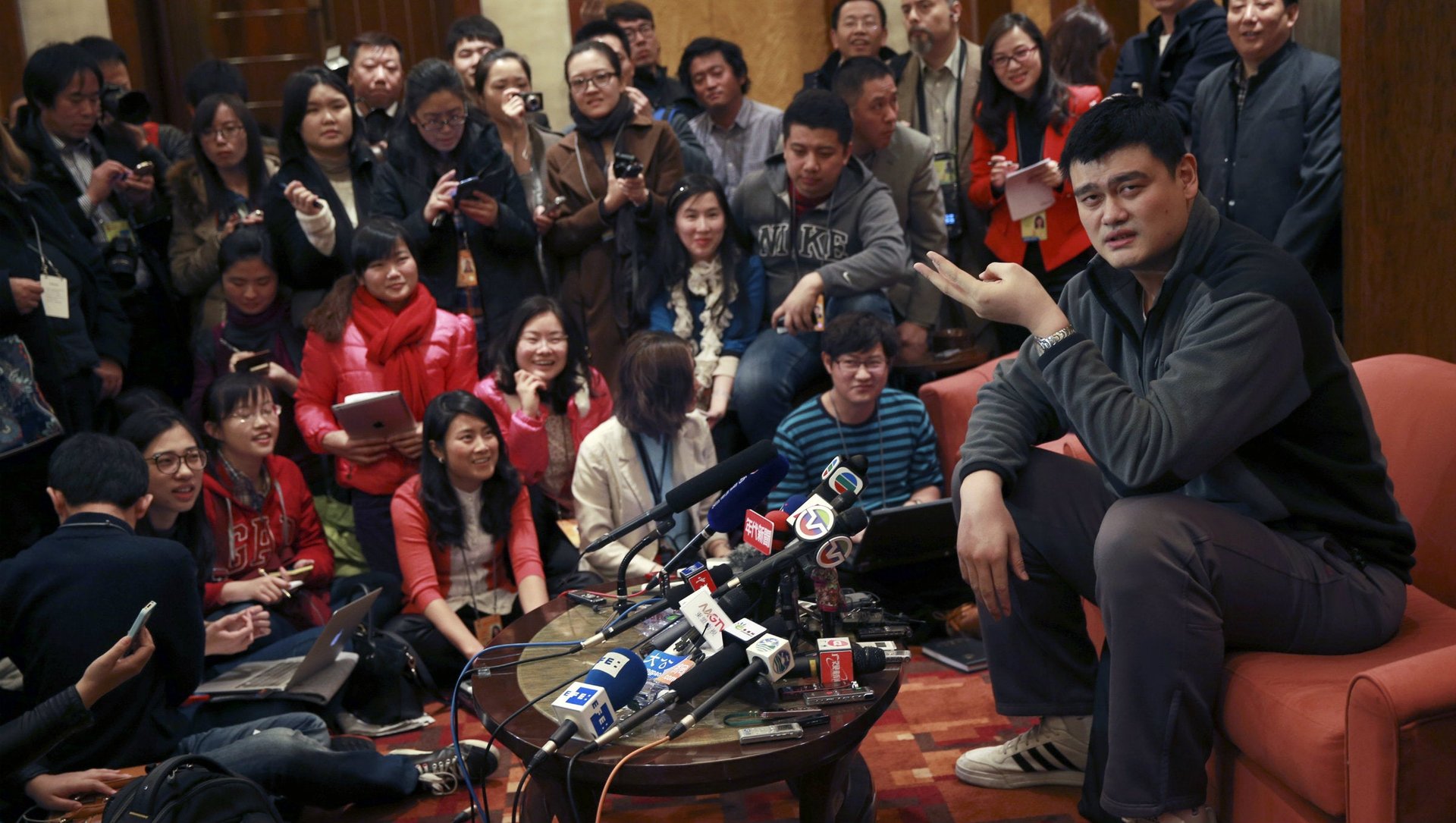India wants to train thousands of journalists in government propaganda, just like China
The Narendra Modi administration plans to spend Rs200 crore ($32 million) to set up a new journalism university, modeled on the Beijing’s massive government-run Communication University of China, officials from the central government said.


The Narendra Modi administration plans to spend Rs200 crore ($32 million) to set up a new journalism university, modeled on the Beijing’s massive government-run Communication University of China, officials from the central government said.
“Media institutes in the West are basically schools of journalism,” an unnamed official from the ministry of information and broadcasting told the Economic Times, explaining, sort of, why China was the model. “We wanted an overarching university and the Beijing model appealed the most to us.”
What the official doesn’t mention is that Chinese state-run media schools like the Communication University of China teach skills like video editing and television broadcasting, but are also a fundamental part of China’s censorship machine. They feed their students a steady diet of Communist Party-approved education, and churn out “journalists” who report government diktats and press conferences unquestioningly. Perhaps to clear up any question about these schools’ role, the Chinese government made officials from the ministry of propaganda heads of the top journalism schools in recent years.
The Communication University of China, with 15,000 students, also teaches art, design, public relations and advertising, and claims to be China’s top-ranked media school. But some journalism schools outside of mainland China don’t recognize classes and credits from the university, because of its reputation as an institute of propaganda.
Journalism graduates from the Communication University of China often go on to Chinese state-run media houses like broadcaster CCTV, which doubles as a mouthpiece for the Communist Party government.
A former producer for CCTV said in a resignation letter in late 2013 that journalists at the television station got more than 1,000 “propaganda orders” a year from the government:
Journalistic integrity and professionalism were nowhere to be found…The voices we hope to broadcast and the attitudes we hope to express have been silenced over and over again.
Unauthorized reporting on officials who control the country is verboten, even when they or their family are amassing great wealth, are hugely corrupt, or their children have been involved in a fatal car crash. So is independent coverage of things like accidents and pollution that have harmed or killed citizens—like trying to root out the cause of Shanghai’s New Year’s Eve stampede that killed 36, or reporting on the companies behind China’s massive pollution problem, or the melamine scandal that killed several infants.
Because China’s media works as a government mouthpiece, it leaves little to no space for conflicting opinions, nor rarely solicits comment from other governments, but it is still the main source of information for 1.3 billion people. Here’s how Chinese state newswire Xinhua recently described Arunachal Pradesh, for example:
The so-called “Arunachal Pradesh” was established largely on the three areas of China’s Tibet—Monyul, Loyul and Lower Tsayul currently under Indian illegal occupation. These three areas, located between the illegal “Mcmahon Line” and the traditional customary boundary between China and India, have always been Chinese territory.
In 1914, the colonialists secretly contrived the illegal “Mcmahon Line” in an attempt to incorporate into India the above-mentioned three areas of Chinese territory. None of the successive Chinese governments have ever recognized this line.
In February 1987, Indian authorities declared the founding of the so-called “Arunachal Pradesh.”
The end result of the government control over media is citizens of China are often uninformed, or misinformed, about events in the country and around the world, even when they can impact their own health and well-being. CCTV and other Chinese state media coverage of the pro-democracy protests that lasted several months in Hong Kong, for example, was practically non-existent, meaning people in Beijing didn’t even know they were going on.
Defying the state’s rules on what you can report in China means you are out of a job, or worse. Chinese state journalists who reported sympathetically, or even expressed sadness, when students were killed in the 1989 Tiananmen Square protests were fired. Outspoken journalist Gao Yu faces life imprisonment, and a former CCTV anchor is rumored to face the death penalty for allegedly helping Western media outlets report on Chinese leaders’ wealth.
India’s constitution guarantees “freedom of speech and expression,” to all citizens, but does not specifically spell out that that applies to the press. State, local and federal officials have stepped up their censorship of social media and other information sources in recent years, citing the constitution’s exemptions of state security and public order. Under prime minister Modi, there are concerns that censorship has extended further and is impacting mainstream media.
Since coming to power in May of last year, Modi has restricted the media’s access to ministers and bureaucrats. On his foreign visits—and he has traveled prolifically—Modi has chosen to take only correspondents from state-owned media outlets. Copying China’s propaganda-based journalism education system will only weaken India’s already-suffering fourth estate further.